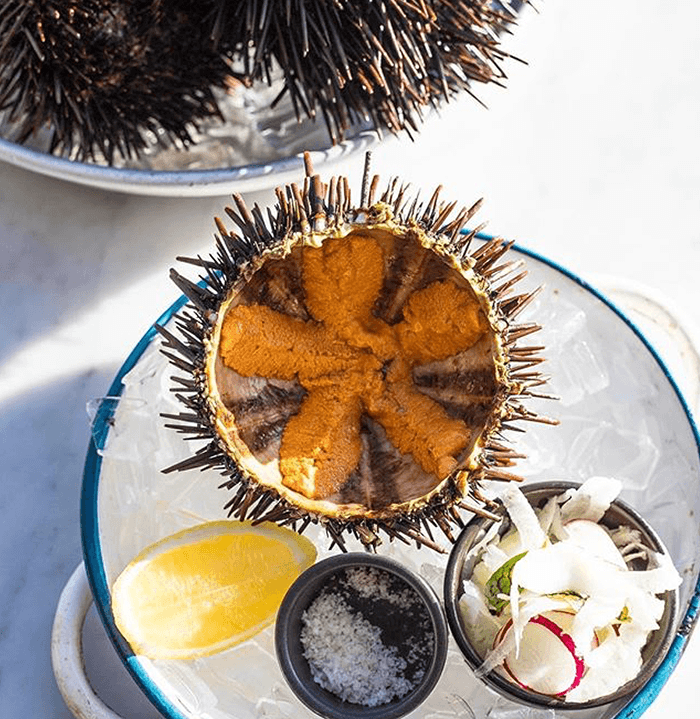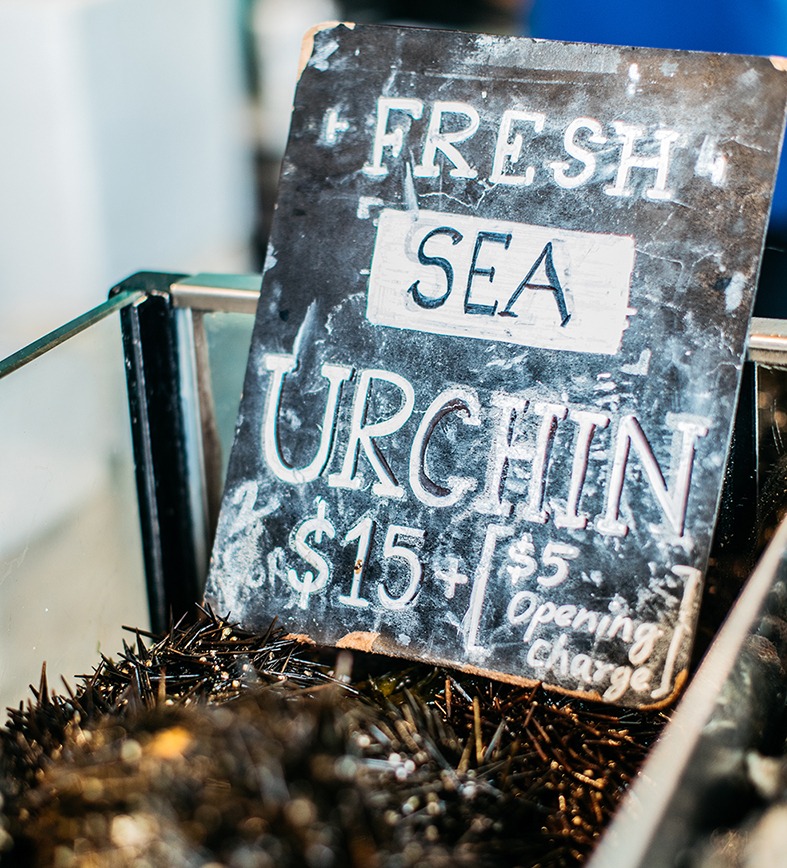Sea urchins: “ocean’s butter” on the rise
Sea urchins were once considered a pest. For many Aussies, their first interaction with an urchin would be when they accidentally stepped on one. But while attempting to pluck a painful barb from your foot is certainly not an experience anyone would like to repeat, Australian consumer interest in the culinary delights of sea urchins is growing.
While many other nations have considered sea urchins a delicacy for generations, Australia has been a little slower to embrace them as a premium food item.
“For something like the first hundred years of colonial Australian history, we didn’t eat any Australian seafood unless we absolutely had to,” says seafood expert Alex Stollznow from Sydney Fish Market. “We imported salt cod in barrels packed with salt from the Atlantic Ocean. Oysters used to be harvested with ploughs to extract lime to lay bricks and to use the shells as landscaping. Lobsters used to be force-fed to prisoners, because shellfish are forbidden in the Old Testament.”

Truffles of the sea
But as Australia has become more multicultural, Aussies have become more adventurous in their food choices. Sea urchins are now found on the menus of top restaurants around the country, and seafood-loving foodies in lockdown have also been experimenting with the spiky marine creature. What’s got everyone searchin’ for urchin? Hidden inside that scary exterior, sea urchins contain delicate and delicious tongues of roe. These are so rich and creamy, some have dubbed it the “ocean’s butter” or “truffles of the sea”.
“It’s creamy and sweet,” Stollznow says. “Just briny enough to be savoury, but almost alarmingly sweet and creamy. If it’s your first taste, you’ll be surprised at that richness. I also find the redder the tinge of the roe, the sweeter the urchin tends to be.”

A front roe seat
Diver Greg Finn from Pacific Sea Urchin hand-harvests sea urchins in NSW’s Port Stephens. He says that the urchins’ diet will affect the quality of the roe.
“You can’t just go out there and catch anything,” he says. “It’s based on understanding the science behind which urchins will be the best quality. There are certain types of seaweed they prefer. That weed will generally deliver a better yielding, better quality roe.”
Experts like Finn can tell by touch if an urchin is ripe for harvesting. “You can actually pick one up and feel it,” he says. “You can feel the denseness in the shellfish and feel that there’s roe in them. Or if you open them up and have a look and see the quality is good, then you can continue to harvest from that area.”

A spike in numbers
While there are hundreds of different species of urchin around the world, only a few are commonly harvested here in Australia. You’ll mainly find red, purple and green or white varieties. Or, if you’re lucky, the premium lamington sea urchin. Edible sea urchins are predominantly found in NSW, but warming coastal waters have seen urchin numbers increasing. They can now also be found in eastern Victoria and Tasmania.
“The purple sea urchin, which is endemic to NSW, has made its way down to eastern Victoria and across to Tasmania over the last 30 to 40 years,” Finn says. “it’s created an opportunity for more sea urchin fisheries. Together, we’re all harvesting them. It gives a longer period of availability by extending the length of the season.
“There are so many more urchins available now than there used to be. But one of the problems with some sea urchins is that not all of them are harvestable. Some of them don’t have good quality roe development because they don’t have enough food. It’s only the ones that live on that nice seaweed that develop that quality roe.”

Affordable and delicious
So how do you eat a sea urchin? While it’s delicious spread on some crusty bread with a little quality butter, both Finn and Stollznow rave about using sea urchin roe with pasta.
“First I sweat off garlic and onion in some butter and olive oil,” Stollznow says. “When it goes golden and sweet, I throw in the tongues of roe. About one urchin per person does the job. You mash it up with a spoon and it turns into a smooth, uniform liquid that coats the garlic and onion and imparts that creamy, sweet, sea-briny base note.
“Then add a bit of white wine to emulsify and keep it agitated. Take it off the heat, throw in a big fistful of chopped parsley and a big squeeze of lemon. Then toss to coat with pasta.”
Unlike other countries, where sea urchin is a super-premium product, buying sea urchin roe here in Australia is not going to break the bank.
“In any country other than Australia, that’s a many hundred-dollar bowl of pasta,” Stollznow says. “In Australia, it’s more affordable. You could do that for $6 per person on a good day.”

Feel-good seafood
Sea urchin is not just delicious, it can also make you feel pretty darn good. The roe is rich in the chemical anandamide, which interacts with cannabinoid receptors in our brains, acting as a muscle relaxant. It also has anti-inflammatory properties, helps sleep and elevates mood. But best of all, when you eat sea urchin, you don’t have to feel guilty about it.
“They’re a sustainable seafood product,” Finn explains. “You’ll actually be doing the environment a favour, because sea urchins are ferocious predators and they can mow down a lot of habitat, which can be destructive if it’s not kept in check. If people are wanting to have a seafood experience without feeling like they’re doing any damage to marine resources, I think sea urchins are a pretty safe choice.”









